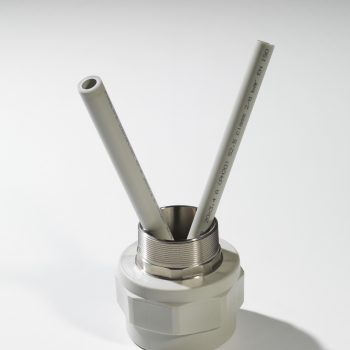Dec . 10, 2024 23:11 Back to list
HDPE N12 Corrugated Dual Wall Pipe Manufacturing Facilities Overview
Understanding HDPE N-12 Corrugated Dual Wall Pipe Factories
High-Density Polyethylene (HDPE) N-12 corrugated dual wall pipes have become a staple in modern infrastructure, particularly in drainage and sewage applications. The unique design and material properties of HDPE make it suitable for a variety of uses, while the N-12 designation refers to its specific structural configuration that provides excellent strength and durability. In this article, we will explore the significance of HDPE N-12 pipes, the manufacturing process, and the role of factories in producing these essential components for civil engineering projects.
What Makes HDPE N-12 Unique?
HDPE N-12 pipes are distinguished by their dual-wall construction, which consists of an inner smooth wall and an outer corrugated wall. This design offers enhanced strength and flexibility, making these pipes ideal for handling both high and low-pressure conditions. The smooth inner wall facilitates easy and efficient flow of liquids, while the corrugated outer wall provides structural integrity that resists deformation under load, making it particularly suitable for underground applications.
One of the most appealing characteristics of HDPE is its resistance to corrosive chemicals and environmental factors. This property extends the lifespan of the pipe, often exceeding 50 years with proper installation and care. Additionally, HDPE is lightweight compared to traditional materials like concrete or clay, which simplifies transportation and installation processes.
The Manufacturing Process
The production of HDPE N-12 corrugated dual wall pipes involves several stages, starting from the selection of high-quality polyethylene resin. Factories utilize advanced processing techniques to ensure that the pipes meet strict industry standards for performance and safety.
1. Material Preparation The first step in manufacturing involves the preparation of raw materials. High-density polyethylene pellets are sourced and processed to create a homogenous mixture ready for extrusion.
2. Extrusion The mixture is then fed into an extruder, where it is melted and shaped. For dual-wall pipes, the manufacturing machine employs a co-extrusion process that allows the simultaneous production of both the inner smooth wall and the outer corrugated wall. This is achieved using specially designed dies that shape the molten HDPE into the desired pipe configuration.
hdpe n 12 corrugated dual wall pipe factories

3. Cooling and Cut-Off After extrusion, the pipes pass through a cooling system to solidify the material. Once cooled, the extruded lengths are cut to specified lengths to meet customer requirements.
4. Quality Control Throughout the manufacturing process, stringent quality control measures are in place. Factories perform various tests to check parameters such as pressure ratings, wall thickness, and overall integrity. This ensures that the finished products meet industry standards, such as ASTM (American Society for Testing and Materials) specifications.
5. Packaging and Distribution Finally, the finished pipes are packaged and prepared for distribution. This may involve bundling the pipes together for easier transport or using protective coverings to prevent damage during shipping.
The Role of Factories in the Industry
Factories that produce HDPE N-12 corrugated dual wall pipes play a crucial role in the infrastructure industry. They are responsible for not only ensuring the quality and durability of the products but also for keeping up with the growing demand for sustainable and effective drainage solutions. By adopting modern manufacturing technologies and processes, these factories can improve efficiency and reduce waste, thereby contributing to environmental sustainability.
Moreover, the factories often provide technical support and guidance for installation, helping engineers and contractors understand the best practices for utilizing these pipes in their projects. This collaboration ensures optimal performance and longevity, ultimately benefiting communities that rely on robust drainage and sewage systems.
Conclusion
In conclusion, the significance of HDPE N-12 corrugated dual wall pipe factories cannot be understated. They are integral to the production of a product that offers durability, efficiency, and sustainability for civil engineering applications. As infrastructure needs continue to evolve, the role of these factories will remain vital in delivering high-quality solutions that meet the demands of modern society. Whether it is in urban drainage, agricultural irrigation, or stormwater management, HDPE N-12 pipes represent a smart choice for the future.
-
HDPE & PPR Pipe Elbows Durable, Corrosion-Resistant Solutions
NewsJun.01,2025
-
HDPE Tee Fittings 48-Inch HDPE Pipe Solutions & Cost Optimization
NewsJun.01,2025
-
Premium PVC Perforated Pipes for Efficient Drainage Trusted Factories
NewsMay.31,2025
-
Premium Perforated PVC Pipes for Drainage Solutions Trusted Factories & Manufacturers
NewsMay.31,2025
-
HDPE Electrofusion Fittings Durable, Leak-Proof Conduit Solutions
NewsMay.31,2025
-
HDPE Compression Fittings Leak-Proof, Corrosion-Resistant Solutions
NewsMay.31,2025

